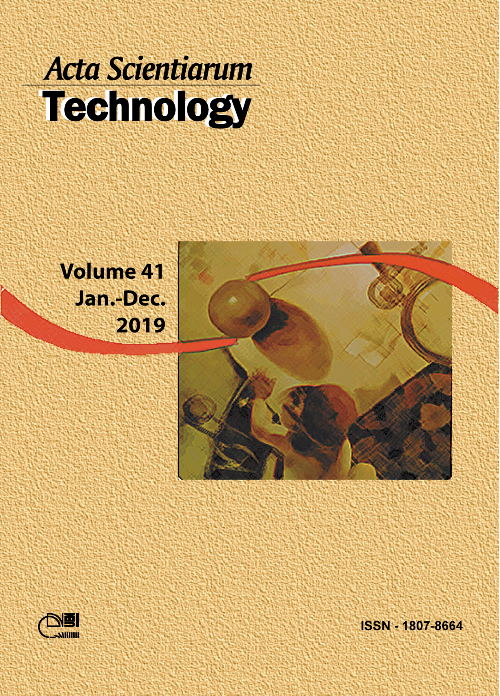Screening of fungal strains with potentiality to hydrolyze microalgal biomass by Fourier Transform Infrared Spectroscopy (FTIR)
DOI:
https://doi.org/10.4025/actascitechnol.v41i1.39693Palavras-chave:
Chlorella sp., Desmodesmus subspicatus, fungi, infrared spectroscopy.Resumo
The use of fungi is a promising alternative for harnessing biomass after lipid extraction of microalgae since this biomass may contain relevant levels of carbohydrates that can be converted into other compounds of interest, such as sugars. Fourier Transform Infrared Spectroscopy (FTIR) has proved to be an efficient and environmentally less impacting tool for the selection of microorganisms with biotechnological potential. This study aimed to apply FTIR for the selection of fungal strains with potential to hydrolyze the biomass of the microalgae Desmodesmus subspicatus and Chlorella sp after lipid extraction. Eleven fungal strains were screened for residual biomass hydrolysis and FTIR was applied followed by multivariate analysis for the selection of filamentous fungi. The highest cell density was 28.7 í— 106 cells mL-1 for Chlorella sp. and 15.8 í— 106 cells mL-1 for D. subspicatus and the values of total carbohydrates content were 23.1 and 16.9%, respectively. Principal Component Analysis (PCA) and Hierarchical Cluster Analysis (HCA) were useful tools to screen fungal strains. After multivariate analysis, it was possible to observe that the fungi strains that presented the greatest ability to use microalgal biomass were Penicillium G12 due to the glucose and xylose sugars obtained after lipid extraction from D. subspicatus (with sugar yield of 9.4 and 6.6%, respectively) and Trichoderma auricularis for Chlorella sp. (with sugar yield of 12.9 and 9.6%, respectively). FTIR was successfully applied to screen fungal strains.Downloads
Downloads
Publicado
Como Citar
Edição
Seção
Licença
DECLARAÇíO DE ORIGINALIDADE E DIREITOS AUTORAIS
Declaro que o presente artigo é original, não tendo sido submetido í publicação em qualquer outro periódico nacional ou internacional, quer seja em parte ou em sua totalidade.
Os direitos autorais pertencem exclusivamente aos autores. Os direitos de licenciamento utilizados pelo periódico é a licença Creative Commons Attribution 4.0 (CC BY 4.0): são permitidos o compartilhamento (cópia e distribuição do material em qualqer meio ou formato) e adaptação (remix, transformação e criação de material a partir do conteúdo assim licenciado para quaisquer fins, inclusive comerciais.
Recomenda-se a leitura desse link para maiores informações sobre o tema: fornecimento de créditos e referências de forma correta, entre outros detalhes cruciais para uso adequado do material licenciado.























